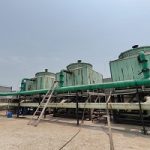| Title of Seminar | Advanced Thermodynamics |
| Theme | To prepare students for exam as well as industry application of Thermodynamics |
| Schedule | Date: 8th February, 2018 Time: 1.40 - 4.15 p.m. Venue: Seminar Hall, 3rd Floor |
| Target Audience | B.E. / T.E. Mechanical and Automobile Students |
| Speaker Profile | Name: Er. Awesh choudhary Education: Master's in Mechanical Engineering Post graduate Diploma in piping and process equipment design Post graduate in product design and development Designation: Founder of CORT Consultancy Profile: CNC consultant at Cort Consutancy Entrepreneur and a career Counsellor Worked as Design Engineer at Indus Project Ltd. for 2 years Teaching Experience of 4 years |
Thermodynamics is a branch of physics concerned with heat and temperature and their relation to other forms of energy and work. The behavior of these quantities is governed by the four laws of thermodynamics, irrespective of the composition or specific properties of the material or system in question. The laws of thermodynamics are explained in terms of microscopic constituents by statistical mechanics. Thermodynamics applies to a wide variety of topics in science and engineering, especially physical chemistry, chemical engineering and mechanical engineering.
Historically, thermodynamics developed out of a desire to increase the efficiency of early steam engines, particularly through the work of French physicist Nicolas Léonard Sadi Carnot (1824) who believed that engine efficiency was the key that could help France win the Napoleonic Wars. Scottish physicist Lord Kelvin was the first to formulate a concise definition of thermodynamics in 1854 which stated, Thermo-dynamics is the subject of the relation of heat to forces acting between contiguous parts of bodies and the relation of heat to electrical agency.
The initial application of thermodynamics to mechanical heat engines was extended early on to the study of chemical compounds and chemical reactions. Chemical thermodynamics studies the nature of the role of entropy in the process of chemical reactions and has provided the bulk of expansion and knowledge of the field. Other formulations of thermodynamics emerged in the following decades. Statistical thermodynamics, or statistical mechanics, concerned itself with statistical predictions of the collective motion of particles from their microscopic behavior. In 1909, Constantin Carathéodory presented a purely mathematical approach to the field in his axiomatic formulation of thermodynamics, a description often referred to as geometrical thermodynamics.
Applied fields
- Atmospheric thermodynamics
- Biological thermodynamics
- Black hole thermodynamics
- Chemical thermodynamics
- Classical thermodynamics
- Equilibrium thermodynamics
- Industrial ecology (re: Exergy)
- Maximum entropy thermodynamics
- Non-equilibrium thermodynamics
- Philosophy of thermal and statistical physics
- Psychometrics
- Quantum thermodynamics
- Statistical thermodynamics
- Thermoeconomics
- There are two types of thermodynamic instruments, the meter and the reservoir. A thermodynamic meter is any device which measures any parameter of a thermodynamic system. In some cases, the thermodynamic parameter is defined in terms of an idealized measuring instrument. For example, the zeroth law states that if two bodies are in thermal equilibrium with a third body, they are also in thermal equilibrium with each other. This principle, as noted by James Maxwell in 1872, asserts that it is possible to measure temperature. An idealized thermometer is a sample of an ideal gas at constant pressure. From the ideal gas law pV=nRT, the volume of such a sample can be used as an indicator of temperature; in this manner it defines temperature. Although pressure is defined mechanically, a pressure-measuring device, called a barometer may also be constructed from a sample of an ideal gas held at a constant temperature. A calorimeter is a device which is used to measure and define the internal energy of a system.
- A thermodynamic reservoir is a system which is so large that its state parameters are not appreciably altered when it is brought into contact with the system of interest. When the reservoir is brought into contact with the system, the system is brought into equilibrium with the reservoir. For example, a pressure reservoir is a system at a particular pressure, which imposes that pressure upon the system to which it is mechanically connected. The Earth’s atmosphere is often used as a pressure reservoir. If ocean water is used to cool a power plant, the ocean is often a temperature reservoir in the analysis of the power plant cycle.










